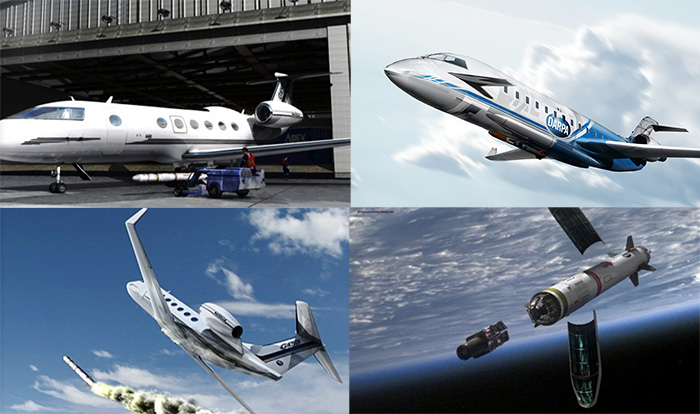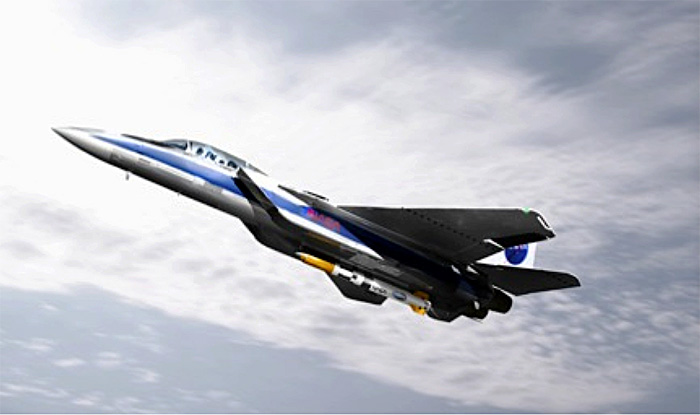[Update 3/25/14: DARPA has awarded an ALASA development contract to Boeing.]
Airborne Launch Assist Space Access (ALASA) is a project of the Defense Advanced Research Projects Agency (DARPA). It is headed by Mitchell Burnside Clapp, a long-time advocate of air launch and winged systems. Burnside Clapp was one of the founders of Pioneer Rocketplane, which later became Rocketplane, LLC.
ALASA seeks to address military concerns with traditional ground-launched systems. The military views these systems as costly due to high manpower requirements at fixed facilities, sluggish due to the need to reconfigure pads between launches, rigid due to limitations on launch azimuth launch times, and brittle because they are vulnerable to weather, earthquake, tsunamis, and enemy attack. DARPA believes that air launched systems will be more affordable, more responsive (the goal is one day from call-up to launch), more flexible (any orbit, any time), and more resilient.
Like NASA’s Nanosatellite Launch Challenge, ALASA hopes to develop a reliable, cost-effective launcher for small satellites. DARPA’s definition of “small” is a bit different, though. The NASA challenge is targeting CubeSat-sized payloads up to one kilogram. ALASA wants to develop a system that can put up to 100 pounds (45 kilograms) into Low Earth Orbit. That would apparently rule out systems like the GO Launcher, for example.
ALASA envisions an air-launched rocket with a gross weight of approximately 5,000 pounds and launch costs of no more than $1 million per flight. All command and control functions will be carried out onboard the aircraft, eliminating dependencies on standard ranges. The aircraft would be able to relocate and fly out of any major commercial airport.
DARPA anticipates a fast development program leading to 36 launches per year by 2015.
One potential concept ALASA looked at was essentially a SpaceX Falcon 1e with the addition of a wing. Studies showed that air launch increased the Falcon 1e payload by 25%. Changing the Falcon 1e’s engine nozzle to a nozzle optimized for high altitude improved payload by 60%.
One of the risks associated with the program is the uncertain size of the launch market. A previous NASA/DARPA study showed demand estimates ranging from 5 to 100 launches per year. High flight rates are crucial to meeting DARPA’s goal. Increasing the flight rate from 6 flights per year to 24 flights per year would reduce the cost per flight by 26%, according to DARPA.
DARPA is considering both solid and liquid propellent for the upper stages. One “obvious” option is a three-stage solid rocket launched from an F-15. DARPA is also considering business jets and larger aircraft, such as the Boeing 747, as launch platforms.




Leave a Reply